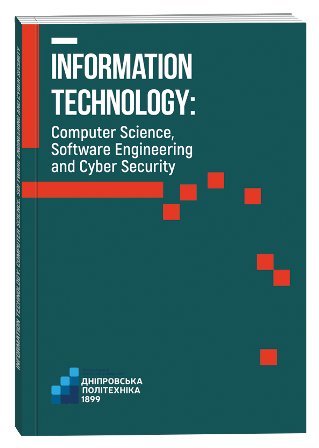LMS PREDICTION AND KALMAN FILTERING FOR THE PROBABILITY OF THE MAIZE DISEASE OCCURENCE
DOI:
https://doi.org/10.32782/IT/2024-4-8Keywords:
Kalman filtering, LMS prediction, probability of the maize disease occurrence.Abstract
The paper is devoted to an urgent agriculture problem such as the maize disease occurrence prediction. The data for the probability of the maise disease occurrence used in the paper are taken from the dataset of professional weather stations from Metos by Pessl Instruments using the FieldClimate IoT platform, access to which is provided by Metos Ukraine LLC. The data are collected from September 2022 to September 2023 with a 1-hour interval for the Dnipropetrovsk region. In our recent papers the data prediction is made on the basis of the neural networks. It should be stressed that the data contain discontinuities, so the question occurs whether the data smoothing may enhance the prediction. In our recent papers we used the smoothing algorithm which is based on an artificial exponential decay which is used in order to smooth the data discontinuities. However, such an approach is rather artificial one. So a question occurs whether a standard smoothing algorithm, for example such as the Kalman one, may enhance the data prediction. For simplicity, in this paper we restrict ourselves to the investigation of the LMS prediction of the smoothed and non-smoothed data. It is shown that the Kalman filtering may slightly enhance some metrics of the LMS prediction. The corresponding investigation for the neural network prediction may be a plan for the future. The aim of the work is to investigate the LMS prediction of the probability of the maize disease occurrence in the case where the data are non-smoothed and in the case where the data are smoothed on the basis of the Kalman algorithm. The methodology consists in the Kalman filtering and the LMS prediction of the data for the probability of the maize disease occurrence. The scientific novelty consists in the use of the Kalman filtering of the data for the probability of the maize disease occurrence in order to enhance the data prediction. The conclusions are as follows. The data Kalman filtering may slightly enhance some metrics of the LMS prediction.
References
Laktionov I., Diachenko G., Rutkowska D., Kisiel-Dorohinick M., An Explainable AI Approach to Agrotechnical Monitoring and Crop Diseases Prediction in Dnipro Region of Ukraine. Journal of Artificial Intelligence and Soft Computing Research. 2023. Vol. 13, issue 4, p. 247–272. doi: 10.2478/jaiscr-2023-0018
Diachenko G., Laktionov I., Vizniuk A., Gorev V., Kashtan V., Khabarlak K., Shedlovska Y., An Improved Approach to Prediction of Maize Disease Occurrence Based on Weather Monitoring and Machine Learning: a Case of the Forest-Steppe and Northern Steppe of Ukraine. Engineering Applications of Artificial Intelligence, 2024, under review.
Lai X., Yang T., Wang Z., Peng C. IoT Implementation of Kalman Filter to Improve Accuracy of Air Quality Monitoring and Prediction. Applied Sciences. 2019. Vol. 9, issue 9, 1831 (23 pages). doi: 10.3390/app9091831
Tajdari T. Adaptive method to predict an track unknown system behaviors using LMS and RLS algorithms. Facta Universitatis, Series: Electronics and Energetics. 2021. Vol. 34, issue 1, pp. 133–140. doi: 10.2298/FUEE2101133T
Prasetyowati S. A. D., Arifin В., Ardalli J., Ismail M., Subroto I. M. I., Purnomo M. H. A Hybrid FLC-LMS Algorithm for Predicting Sediment Volume in the River. International Journal of Intelligent Engineering and Systems. 2021. Vol. 14, issue 2, pp. 395–409. doi: 10.22266/ijies2021.0430.36
Gusev O. Yu., Gorev V. M., Korniienko V. I. Theory of adaptive filtration: tutorial. Dnipro: NTU “DP”, 156 p, 2019.







